The year 2020 has certainly tested us all. It provided a wide and deep array of real-life events for us to address, respond to, and learn from. For the National Ocean Service (NOS) Disaster Preparedness Program (DPP), our ability to maintain our emergency response focus and adapt to the constraints of physical distancing was tested. I am pleased to report that we rose to the challenge!
Here’s a short recap of some of the successes that the DPP and our partners accomplished during the trying conditions of fiscal year 2020:
Fall 2019
In the fall of 2019, the program started the fiscal year by expanding its preparedness and response portfolio to include two new areas:
- Long-term recovery of ecosystems and coastal communities.
- Regional preparedness.
In just one year, the DPP’s recovery coordinator role has made great strides in coordinating long-term recovery efforts across NOAA, and expanding engagement and awareness across federal agencies, and state and local partners. Development of our recovery programmatic framework continues to reap benefits for NOAA and coastal communities.
Taking coastal risks and program needs into account, the DPP also installed its first regional preparedness coordinator in the Southeast, covering the states of North Carolina, South Carolina, Georgia, and Florida. This role has been critical in improving partnerships across NOAA, and throughout the Southeast with the Federal Emergency Management Agency (FEMA), state emergency management agencies, and the many partners in the region who are focused on preparing for, responding to, and mitigating coastal threats.
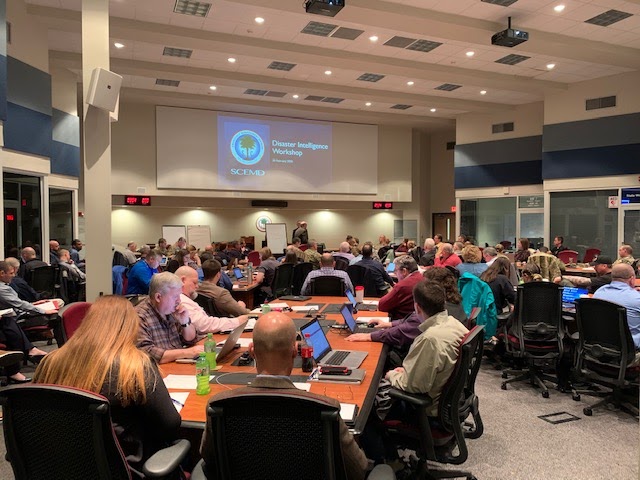
Winter 2019
Planning and executing complex exercises to test our readiness for any adverse event is a pillar of the program. Last December, the DPP partnered with the NOAA Office for National Marine Sanctuaries to hold a functional exercise, “Shaken Sanctuaries.” This exercise simulated a 7.2 magnitude earthquake impacting California between Monterey and San Francisco. This area encompasses numerous NOAA offices as well as the Monterey Bay National Marine Sanctuary and the Greater Farallones National Marine Sanctuary. Exercises like these help to ensure NOS plans, policies, and procedures are disaster ready, and NOS personnel are well-trained for the next disaster response.
We even managed to conduct some in-person training before we couldn’t! In January, DPP provided numerous staff across NOAA line and program offices with NOAA-specific Incident Command System 300-level (ICS-300) in Silver Spring, Maryland. This class provides FEMA certification at the ICS-300 level while ensuring NOAA staff understand their specific roles, missions, and mandates during an emergency event. This course is critical in maintaining a robust cadre of subject matter experts who are trained to integrate into an emergency response structure as effectively as possible. The DPP aims to provide this training to NOAA staff two to three times each year, when feasible.
Then, in February the DPP conducted its inaugural Emergency Support Function Resource Advisor Training in Florida. During a disaster response, the Resource Advisor is the advocate of cultural and natural trust resources directly or indirectly affected by an incident and the response. One important focus for NOAA is making sure vessels and other storm-driven debris are safely extracted from sensitive habitats like coral reefs, seagrass beds or valued cultural sites. In partnership with NOS’s Office of National Marine Sanctuaries, the Florida Fish and Wildlife Conservation Commission, and the Florida Department of Environmental Protection, the DPP conducted this training in Apalachicola, Florida, and looks forward to continuing this partnership throughout the Southeast in 2021 and beyond.
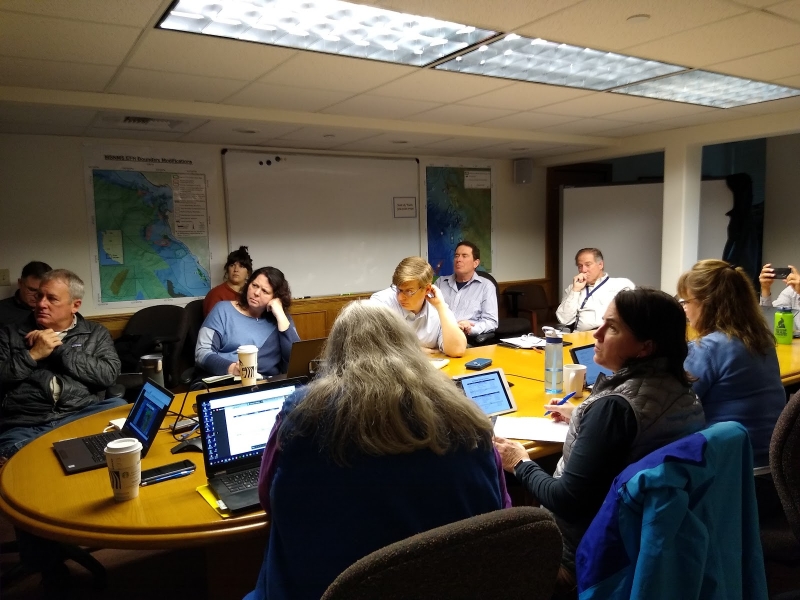
Spring 2020
Working conditions changed pretty drastically in March, and so did the program’s focus. The NOS Incident Management Team, led by the DPP, activated on March 2, 2020 to manage situational awareness and incident coordination across NOS and close partners related to the COVID-19 pandemic. To this day, the NOS Incident Management Team continues this effort. They have been steadfast and committed to ensuring that NOS staff are safe and supported, our facilities are prepared, and our missions are unimpeded.
Without hesitation, the DPP began adapting to virtual work and coordination. Initially envisioned as a large in-person event, the DPP hosted a three-part virtual Hurricane Preparedness Summit in preparation for the 2020 hurricane season. The Summit focused on NOS’s hurricane readiness in the midst of the COVID-19 pandemic. Each NOS program office discussed how they implemented lessons learned from the 2019 hurricane season; identified challenges and limitations that NOS faced for deployments, missions, personnel, and resources during the 2020 hurricane season; and developed guidelines and policies to ensure NOS personnel can safely respond to a hurricane during a pandemic. The three-part summit also included contributions from important NOS federal and state partners, including the NOAA National Weather Service, Federal Emergency Management Agency, U.S.Coast Guard, U.S. Environmental Protection Agency, General Services Administration, the Centers for Disease Control and Prevention, and the state of Florida.
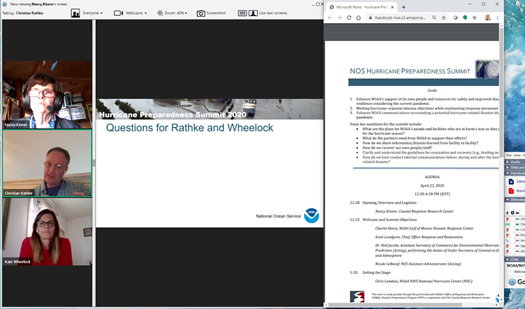
Summer 2020
The effort that went into the NOS Hurricane Preparedness Summit paid dividends as we entered the 2020 hurricane season, the most active hurricane season on record. The realizations and lessons learned from the summit were invaluable to understanding responder risks, response timelines, staff safety, and partner coordination. The DPP supported NOS preparedness and response operations for nine tropical storms and hurricanes that threatened and impacted the coastal United States through September 2020 (with a handful more through November). As the incident coordinators, DPP staff were responsible for coordinating across NOS program offices when multiple offices were impacted by an event. The DPP gathered information on mission readiness, logistical needs, and impacts to personnel and infrastructure before, during, and after the storm. The DPP coordinated information on the tracking and safety of all NOS personnel in each storm’s area of impact, as well as the closure, impacts, and reopening of numerous sanctuaries, estuarine research reserves, facilities, and laboratories. The program also coordinated the operational mission support provided by multiple NOS program offices to federal, state, and local partners; and provided use of NOAA’s Gulf of Mexico Disaster Response Center for mission critical activities.
In August, the DPP developed a COOP, which stands for continuity of operations planning, working group for NOS. The NOS COOP Working Group is composed of representatives from across NOS. The working group supports and promotes the development of continuity plans, policies, and procedures. This working group will ensure NOS maintains a viable and effective continuity capability through coordinated planning, exchange of information, and management techniques. The NOS COOP working group builds on information and directives from the NOAA COOP working group to ensure consistency.
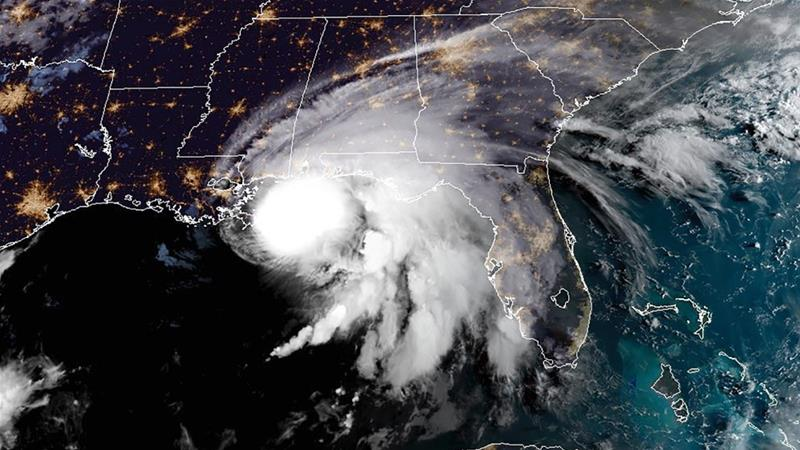
Fall 2020
The fiscal year storms culminated with the landfall of Hurricane Sally at Gulf Shores, Alabama, on Sept. 16, 2020 as a Category 2 storm with 105 mph winds and devastating storm surge. The storm’s impacts extended across a broad area of the Northern Gulf of Mexico. The NOAA Gulf of Mexico Disaster Response Center (DRC), located in Mobile, Alabama, was built to survive storms such as Hurricane Sally, while providing a base of operations for emergency response support. U.S. Coast Guard Sector Mobile, which is responsible for coastal Mississippi, Alabama, and the Florida Panhandle, relocated command and planning operations to the DRC in advance of the storm. Post storm, the DRC served as the USCG Hurricane Sally Command Post for Marine Environmental Response supported by the NOAA Office of Response and Restoration Scientific Support Team.
Reflecting on the Past and Looking to the Future
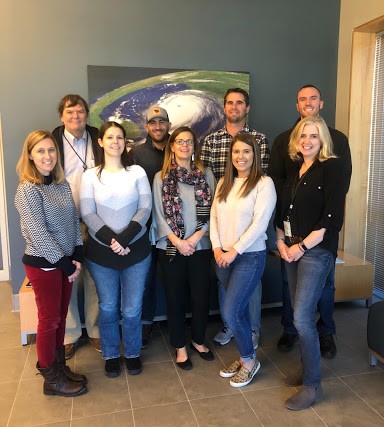
What a year! Nine storms is a lot in the best of times, with fatigue and stress weighing on coordinators and responders. This year also brought wildfires, a public health crisis, and new working conditions. We close out this year with a huge congratulations and thank you to the NOS Incident Management Team and our NOS field responders for their commitment and dedication to ensuring NOS carries out its mission essential functions while keeping our staff and families as safe as possible.
This month marks the third anniversary of the DPP! This small program has achieved a lot in three years and its herculean effort in 2020 prompted the DPP staff to be named an NOS Team of the Year. The Team Member of the Year award recognizes outstanding contributions to NOS programs and the demonstrated exceptional and sustained effort toward accomplishment of NOS missions. We couldn’t be prouder.
In our fourth year, we are excited to focus on refining our exercise, training, regional coordination, continuous improvement, continuity planning and recovery portfolios while improving the overall preparedness posture of NOS, our partners, and coastal communities.
